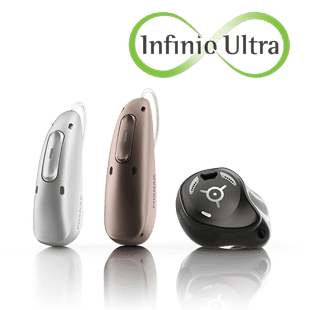
VCLASS: Evaluating and monitoring listening difficulties in classrooms
The Vanderbilt Classroom Listening Assessment Short Survey is a picture-based questionnaire that specifically targets perceived listening abilities in school-based situations to help clinicians understand and support listening challenges in noisy school environments.
School environments, such as classrooms, cafeterias and gymnasiums, are often noisy and can be challenging for communication, especially for children with hearing loss. However, despite the importance of monitoring how well students can hear in these settings, it can be difficult to do.
Parents and teachers typically don’t observe students in all school environments throughout the school day, which means some listening challenges go unnoticed. However, understanding which specific situations are difficult for a student can be helpful for making patient-centered management decisions.
One population with a clear need for patient-centered management is children with unilateral permanent hearing loss. These children have an increased risk of academic difficulties, but it is difficult to predict which children will struggle the most.1 Monitoring listening difficulties in schools, and taking intervention action if listening is difficult, might be one way to reduce the risk of academic difficulties for these students.
To support this need, we developed the Vanderbilt Classroom Listening Assessment Short Survey (VCLASS). This tool assists in the evaluation and monitoring of listening difficulties in school-based listening situations.
The VCLASS includes 15 illustrated items that depict everyday listening situations, such as listening to a teacher in a classroom or talking with friends. Students rate how easy or difficult it is to listen in each situation, using a simple scale ranging from ‘very easy’ to ‘very difficult.’ The first page of the printable PDF version of the VCLASS (unaided) is shown below.

Subscales reflect different listening situations
Based on data collected in our first validation study2, we created three subscales. The subscales reflect three different types of listening situations:
1. Far away talker – e.g., listening to a teacher from the back of the classroom
2. Close talker (indoors) – e.g., listening to a friend across the table in a cafeteria
3. Close talker (outdoors) – e.g., listening to a friend nearby on a playground
Based on a large sample of school-aged children (aged 9 – 17 years) with unilateral hearing loss, we found that the ‘far away’ situations were the most difficult, followed by the ‘close indoors’ situations. We also found that children who reported more unilateral hearing loss experienced greater difficulty in all situations, compared to those with milder self-reported hearing loss.
Measuring the impact of hearing devices
In this study, we also found robust benefits of devices for students with unilateral hearing loss. That is, children first completed the VCLASS ‘unaided’ version, imagining themselves without any hearing devices. Those who routinely wore hearing devices (e.g., hearing aid, cochlear implant) also completed the VCLASS ‘aided ’ version, imagining themselves wearing their device in each situation.
The results showed a clear benefit:
- In the aided condition, most students reported listening was ‘easy’ or ‘very easy.’
- In the unaided condition, many described the same situations as ‘difficult’ or very difficult.’
This suggests that the VCLASS can be sensitive to intervention effects and can be useful for ensuring devices are beneficial in school-based environments.
Clinical applications
Clinically, the VCLASS can be useful for:
- Identifying students who are having listening difficulties in schools.
- Guiding decisions about the need for extra listening support (e.g., hearing aids, remote microphone systems).
- Monitoring effectiveness of interventions.
For example, with hearing aids, we expect listening to be easier in schools, but the VCLASS can help clinicians monitor if that is true and which, if any, situations continue to be difficult. So, if a student continues to have difficulty in indoor environments despite using a device, this may indicate the need for additional noise-reduction features such as directional microphones or more aggressive sound cleaning.
Accessing the VCLASS
The VCLASS is available in two formats:
By using the VCLASS, clinicians can gain meaningful insights into how children experience listening at school — and take steps to ensure they have the support they need to succeed.
Looking for the VCLASS and other helpful tools for pediatric audiologists? Visit the Phonak Tools and Resources page.
References
1. Picou, E. M., Davis, H., Tang, L. A., Bastarache, L., & Tharpe, A. M. (2025). Relationships between hearing-related and health-related variables in academic progress of children with unilateral hearing loss. Journal of Speech, Language, and Hearing Research, 68(1), 364-376.
2. Picou, E. M., Davis, H., Lunsford, K. H., & Tharpe, A. M. (2025). Validation of the Vanderbilt Classroom Listening Assessment Short Survey for children with unilateral hearing loss. Ear and Hearing, 46(3), 640-652.
